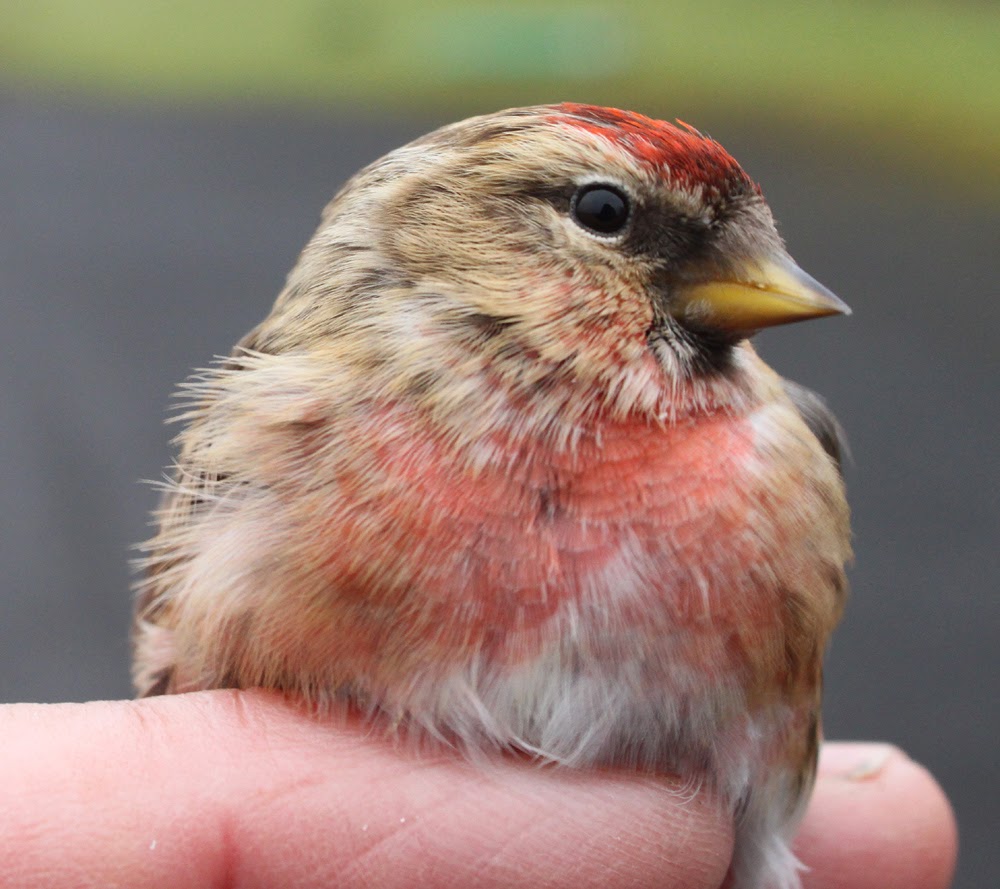It’s been a meagre sort of week for birding with lots of cloud and grey skies and the mid-February doldrums giving limited opportunities for finding new birds. A Wednesday ringing session proved quite productive and enjoyable, followed by a couple of duff days and then Saturday morning the first opportunity to try my luck birding. But I’m really looking forward to the migrants of Spring and there we go again - bird watchers wishing their lives away in seasonal yearnings.
Some of the earliest singers Great Tit, Song Thrush, Dunnock and Robin are in full voice in the garden although a return to cold weather will surely make them place their refrains on hold. A pair of Buzzards is on territory down the lane towards the river and on my travels I’ve heard more than a few Great-spotted Woodpeckers beating out the rhythm on a drum.
Great Tit
Just lately there’s been a juvenile Pomarine Skua along Pilling Way, an injured bird which although able to fly, had a droopy wing. The skua created a stir amongst birders for a week or two then disappeared off the radar after it was seen feeding mostly on carrion Pink-footed Geese. I found the skua again this morning at Fluke Hall but this time it wasn’t going anywhere as it was dead, probably as a result of its rather restricted diet and its injury.
I brought it home, let it dry off and then cleaned it up for a picture or two. It’s not often one finds a Pomarine Skua, even less a tideline corpse.
Pomarine Skua
Pomarine Skua
Fron Wiki. The word pomarine is from the French pomarin, a shortening of the scientific Latin pomatorhinus, ultimately from Greek, meaning "having a covered nose". This refers to the cere which the Pomarine Skua shares with the other skuas.
Bill of Pomarine Skua
On the marsh I also found 33 Whooper Swan, 2 Little Egret, 60 Lapwing, 25 Redshank, 20 Shelduck and 2 Teal. In the stubble field and along the hedgerows were singing Greenfinch and Goldfinch plus a couple of Skylark and a single Stock Dove. Highlights of the woodland were Nuthatch and Tree Sparrows active around the nest boxes.
At Braides Farm were 2 Buzzards, spaced out as it were, one along a fence line the other on a pile of farm debris 100 yards away from the first. Our local Buzzards aren’t ones that like posing for photographs and keep a good distance from man. Who can blame them?
Buzzard
The usual species were at Conder Green, including the Spotted Redshank and Common Sandpiper, two normally migrant waders which have wintered here in the saline creeks. I noted a decrease in Teal numbers down to circa 50 but an increase in Oystercatchers to 16, with a few of them becoming rather noisy in anticipation of Spring. A few Shelduck have reappeared in the creeks after being mostly absent during recent months.
On and around the pool an eclectic mix of 70 Curlew, 1 Black-tailed Godwit, 4 Snipe, 2 Tufted Duck, 2 Goldenye, 2 Cormorant and just 2 Little Grebe.
Curlew
At Glasson Dock there was a Song Thrush in full voice and as I watched the thrush at the very top of a bare tree, a Raven flew over. The Raven was silent and flying strongly in a northerly direction over the river and towards Lancaster but it looked somehow odd. When I looked through binoculars the Raven's bill was stuffed with soft, nest lining material. As I watched the first Raven a second one came into sight, it too with a beak overflowing with nest lining material and this bird carried on in the same flight line as the first one. Nest building fairly locally.
On the yacht basin I counted 22 Goldeneye and then 34 Tufted Duck. There’s a pair of Till Death Us Do Part Goldeneye sailing around the yacht basin, seemingly joined together by an invisible piece of string. The female is less wary than the male and she takes the lead in cruising to the favoured feeding spot before diving for food, quickly followed a few seconds later by the faithful male.
Goldeneye
The Goldeneye breeding habitat is the boreal forest. They are found in the lakes and rivers of the taiga across Canada and the northern United States, Scandinavia and northern Russia. Goldeneyes are migratory with most wintering in sheltered coastal or open inland waters at more temperate latitudes. Goldeneyes nest in cavities in large trees and will readily use nest boxes, and this has enabled a healthy breeding population to establish in Scotland where they are slowly increasing and spreading, possibly into Ireland.
This beautiful and harmless species makes a wonderful addition to the list of breeding British Birds but it is to our national shame that such a bird is on the list of allowed “quarry” for shooting.
Goldeneye
Goldeneye
It was time to head home after an enjoyable morning’s birding that was rather spoiled by finding the dead “Pom”. Let's hope I can put the corpse to good use or quickly find someone who can. Sue isn't too happy about it living in the freezer.
There’s more birding another day with Another Bird Blog. Log in soon.
Linking this post to Anni's Birding Blog.
Linking this post to Anni's Birding Blog.




































































.jpg)












